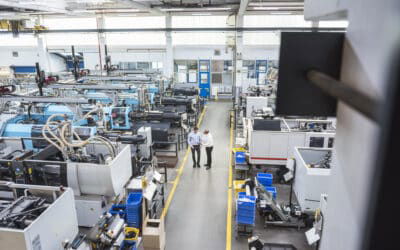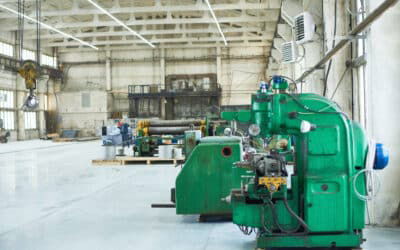Lean Manufacturing is a management method that has transformed the way companies approach production. It aims to continuously improve processes by focusing on eliminating waste. The system is based on optimizing flows, creating value for the customer, and reducing inventories and unnecessary costs. Thanks to specific tools and methods, Lean enables companies to boost performance, quality and flexibility, while increasing customer satisfaction and promoting better use of resources.
Introduction to Lean Manufacturing
Lean Manufacturing focuses on a rigorous approach that seeks to maximize the efficiency of each production process by eliminating superfluous steps. This management system, originally developed by Toyota, emphasizes continuous improvement, known as “Kaizen”, and involves every member of the organization. The aim is to produce only what is needed, at the right time, and to meet customer requirements with the best possible quality, while minimizing costs and resources.
What is Lean Manufacturing?
Lean Manufacturing is a management system that aims to eliminate anything that doesn’t add value to the production process, such as waste, waiting times or unnecessary inventories. By focusing on activities that contribute directly to the creation of value for the customer, this method helps to improve the company’s overall performance. In other words, Lean seeks to optimize every activity so that every resource is used as efficiently as possible, while guaranteeing better quality and lower costs.
The origins and philosophy of Lean Manufacturing
Lean manufacturing has its roots in the Toyota Production System (TPS), a revolutionary approach developed after the Second World War. The main idea was to create a flexible production system that would reduce waste, while improving quality. This philosophy is based on Kaizen (continuous improvement), which encourages every employee to contribute to process optimization. Lean then spread around the world, becoming a benchmark for many companies seeking to improve their performance in terms of quality, costs and lead times.
The 5 fundamental principles of Lean Manufacturing
Lean Manufacturing is based on five key principles that help companies to organize their processes efficiently. These principles not only eliminate waste, but also improve the organization and fluidity of workflows, while focusing on customer satisfaction. The rigorous application of these principles at every stage of production ensures continuous improvement in performance.
Identifying value
The first principle of Lean Manufacturing is to clearly define the value of the product or service from the customer’s point of view. This involves understanding precisely what the customer expects, enabling the company to focus its efforts on the activities that create that value. By eliminating unnecessary tasks or processes that do not add value, the company can reduce costs and improve the quality of its products or services, while better meeting customer expectations.
Mapping value flows
Value stream mapping is a crucial step in visualizing every process involved in the creation of a product or service. This principle helps companies to analyze each step of the workflow in detail, in order to identify waste and inefficiencies that need to be eliminated. By optimizing workflows, companies can improve the speed, quality and efficiency of their production, while reducing inventories and unnecessary resources.
Create flow
Creating a continuous flow means ensuring that processes run smoothly, without interruptions, waiting times or blockages. This principle ensures that each stage of production is optimally connected to the next, enabling a constant flow of materials and information. By reducing bottlenecks and delays, the company can improve responsiveness, product quality and optimize costs, while cutting production lead times.
Pulling flows
The pull system is based on producing according to actual customer demand, rather than producing large quantities in the hope of selling them. This reduces inventories, avoids overproduction and minimizes wasted resources. The production process thus becomes more responsive and flexible, adjusting the manufacture of products to actual customer needs, while maintaining lower inventory levels and optimizing the use of resources.
Continuous improvement
Continuous improvement, or Kaizen, is a fundamental pillar of Lean Manufacturing. This principle involves constantly looking for ways to improve existing processes, whether to reduce costs, optimize flows or improve product quality. Every employee, at every level of the organization, is encouraged to identify problems and propose solutions, thus creating a culture of constant progress. This approach enables the company to remain competitive and adapt to market changes.
Lean Manufacturing tools and techniques
Lean Manufacturing is based on a series of tools and techniques designed to implement its fundamental principles. These tools are designed to help identify waste, optimize processes, and improve overall company performance. They also enable tangible progress to be monitored, and adjustments to be made where necessary to achieve production targets.
What are Lean Manufacturing tools?
The main tools of Lean Manufacturing include techniques such as 5S, Kanban and value stream mapping. 5S is an organizational method designed to improve efficiency by maintaining a clean and orderly workspace. Kanban, on the other hand, is a visual system for managing workflows according to demand. These tools, combined with other techniques such as MUDA (waste) analysis, are essential for improving business performance and responsiveness.
5S, Kanban, and MUDA
5S is a Japanese method for organizing the workspace to make it more efficient. It involves sorting, tidying, cleaning, standardizing and maintaining discipline in the production area. Kanban is a visual tool used to regulate workflows according to actual demand, ensuring that products are produced just-in-time. Last but not least, MUDA analysis helps to identify and eliminate waste that undermines efficiency, such as unnecessary stocks, waiting times or superfluous activities.
Lean Thinking and continuous improvement
Lean Thinking is an approach that goes beyond simple tools and techniques: it’s a way of thinking at the level of the entire organization. By integrating Lean Manufacturing principles into every decision, the company adopts a proactive approach to continuous improvement, aimed at improving quality, reducing costs and maximizing customer value. This optimizes every aspect of the production process and fosters a culture of innovation and sustainable efficiency.
Practical applications of Lean Manufacturing
Lean Manufacturing goes beyond theoretical principles to offer practical applications that enable companies to transform their production processes into efficient, fluid systems. By focusing on the elimination of waste, continuous improvement and the creation of customer value, it helps optimize operational performance while reducing costs. Integrating Lean into daily operations permanently transforms the way an organization functions.
How does Lean work?
The Lean method is based on optimizing each activity in the workflow. By identifying steps that do not add value to the final product, the company can reduce unnecessary inventory and improve overall efficiency. Lean uses various tools, such as Kanban or 5S, to manage time and resources more efficiently. Each process is constantly reviewed to ensure that it contributes directly to customer satisfaction and the quality of the final product or service.
Reduce waste and improve quality
One of the central objectives of Lean Manufacturing is to reduce waste, known by the Japanese term “MUDA”, which is detrimental to productivity. This includes excess inventory, waiting times and production errors. By eliminating these inefficiencies, the organization improves product quality while reducing costs. Lean thus enables the organization to focus on the work stages that create value, while ensuring better use of resources.
Objectives and impacts of Lean Manufacturing
Lean Manufacturing has clear objectives: to improve company performance by reducing waste, increasing product quality and cutting lead times. Applying Lean principles has a considerable impact on a company’s competitiveness, while increasing customer satisfaction. Gains achieved through cost reduction and process improvement have a direct impact on financial and operating results.
What is the purpose of Lean?
The main aim of Lean Manufacturing is to maximize the value created for the customer while minimizing resources and waste. This means constantly improving processes to increase efficiency and productivity. The Lean approach also focuses on reducing problems encountered in production and eliminating steps that do not add value. The result is better product or service quality, lower costs and shorter lead times.
Impact on quality, costs and deadlines
Lean has a significant impact on production costs, quality and lead times. By reducing waste and improving workflows, companies can produce higher-quality products in less time, with lower costs. The Lean system enables customers’ needs to be met more quickly, while reducing inventories and wasted resources. This continuous improvement approach translates into improved competitiveness and greater customer satisfaction.
Integrating Lean Manufacturing into daily operations
Integrating Lean Manufacturing into a company’s day-to-day operations is a key step towards sustainable efficiency. By applying Lean principles on a daily basis, companies not only improve their performance, but also transform the way they work. Successful implementation of Lean requires collective buy-in and constant review of processes to keep them aligned with continuous improvement objectives.
Applying the principles to production
In production, applying Lean principles means optimizing each stage of the process so that it creates maximum value while reducing waste. This translates into smoother workflows, reduced waiting times and the elimination of errors. Companies that apply Lean in their day-to-day operations use tools like Kanban to regulate production and ensure that every activity adds direct value for the customer.
Steps to successful implementation
To successfully integrate Lean Manufacturing, a company needs to follow several key steps. It starts with a mapping of current processes to identify problems and waste. Next, it’s important to train employees in Lean principles and tools, so that they can contribute to continuous improvement. Finally, an organizational culture that values efficiency, quality and flexibility needs to be established to ensure that Lean becomes an integral part of day-to-day operations.
Production optimization with Teeptrak and Lean Manufacturing
Teeptrak solutions combine Lean Manufacturing principles with IoT to improve plant performance. With tools such as Perftrak for machine monitoring and Pacetrak for manual tasks, Teeptrak helps reduce waste, improve quality and optimize production flows. By capturing and analyzing data in real time, these systems provide a clear view of performance, enabling effective continuous improvement actions to be launched.
Teeptrak: A key solution for optimizing performance in Industry 4.0
Teeptrak offers all-in-one systems that modernize plants by providing real-time monitoring of machines and processes. Thanks to plug&play modules, data can be collected instantly and exported at any time to optimize production. These solutions help improve productivity, identify the causes of downtime and launch continuous improvement initiatives. Adapted to various sectors, Teeptrak’s tools contribute to the digital transformation of companies.





0 Comments